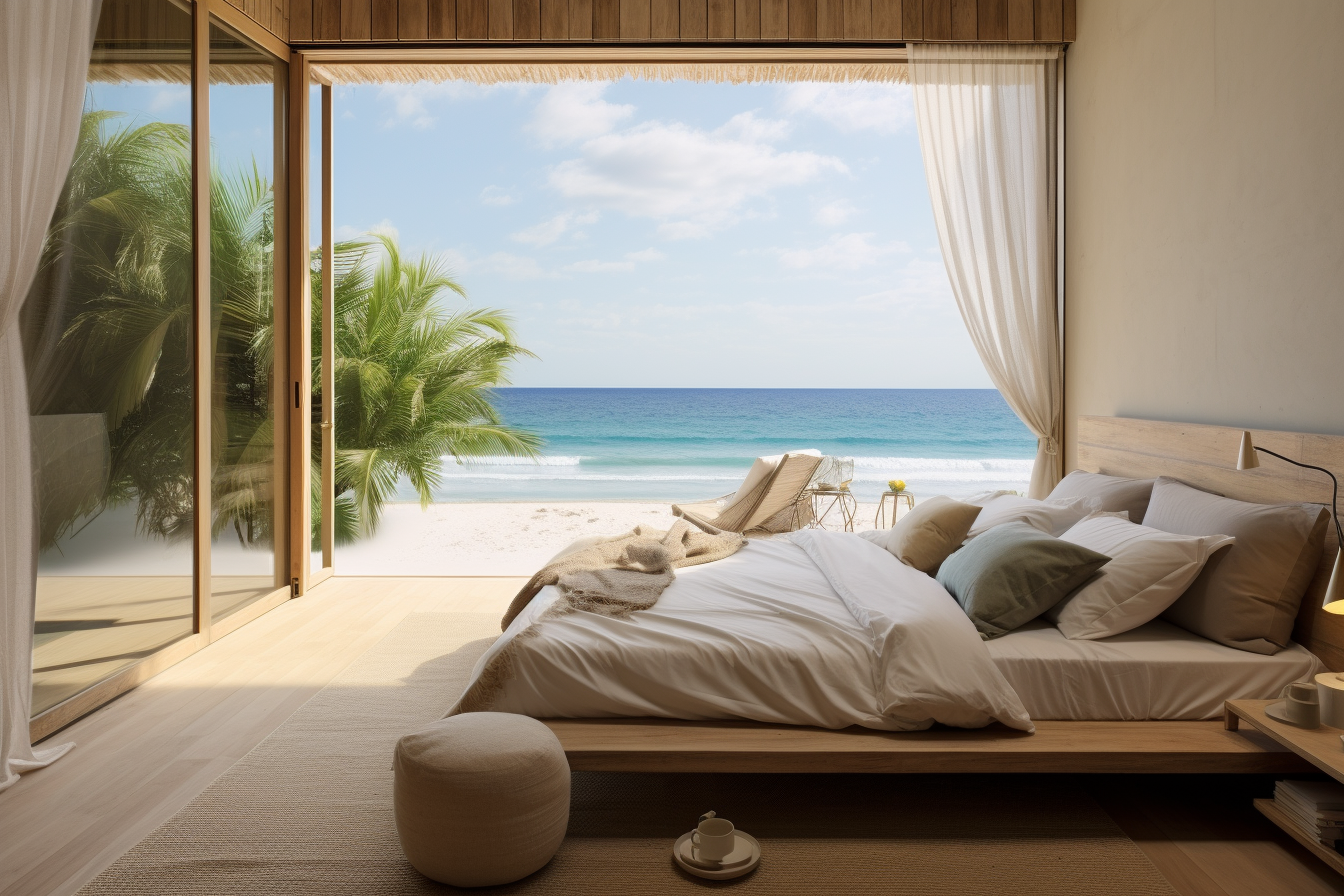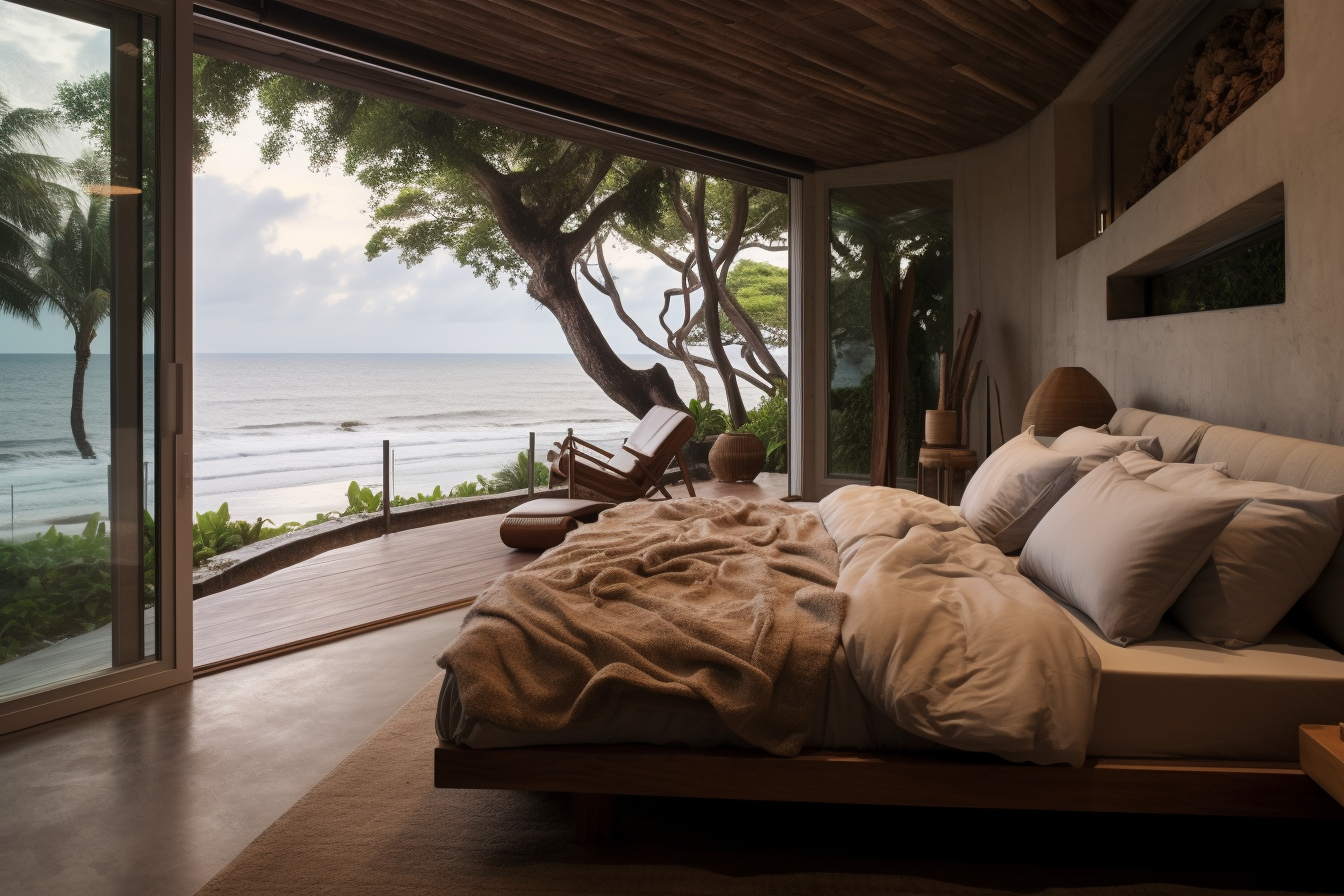The right bed sheets keep you comfortable all night. Choosing sheets made with superior quality materials enhances softness, breathability, and durability. This guide reviews the top sheet materials along with tips for picking the perfect fabrics.
Table of Contents
ToggleWhy Material Choice Matters for Bed Sheets
High-quality sheet materials impact your sleep experience by contributing to:
- Soft, smooth handfeel against the skin
- Effective moisture wicking and breathability to prevent overheating
- Natural temperature regulation for added cooling
- Long-lasting durability through many washes
- Resilience to prevent pilling, fraying and thinning over time
Understanding sheet fabric characteristics helps select the ideal materials suited to your needs.
Factors that Make Sheet Fabrics High Quality
Consider these characteristics when evaluating sheet materials:
- Fiber length – Longer fibers increase softness and durability
- Thread count – Higher counts improve softness and strength
- Weave – Dense weaves enhance durability and regulate temperature
- Yarn type – Single ply yarns make smoother, more consistent fabrics
- Finishing process – Brushing and peaching increase softness and sheen
Using these criteria, below are the top sheet materials known for quality and performance.
The Best Sheet Fabrics for Comfort and Durability
1. Egyptian Cotton
Regarded as the highest quality cotton, prized for its softness, breathability, and durability. Long, thin fibers create a light, breathable weave. Improves with age and washes. Highest cost but exceptional longevity makes it a worthy investment.
2. Pima Cotton
Premium extra-long staple cotton with longer fibers for softness rivaling Egyptian cotton. Native to Southwestern US and grown in other select regions. Breathable, strong and smooth with minimal pilling. Eco-friendly cultivation methods. Slightly lower cost than Egyptian.
3. Supima Cotton
Another high-end extra-long staple cotton known for its softness, durability and vibrant colors. Grown primarily in California. Stands up well to frequent washing. Very breathable and resistant to pilling or fading. An affordable luxury sheet material.
4. Percale Cotton
Lightweight, crisp, breathable weave. Combed and mercerized long cotton fibers create a smooth, matte finish that softens over time. Yarn is spun very tightly for durability and low pilling. Perfect for warm climates and anyone who sleeps hot. Requires more ironing than sateen.
5. Sateen Cotton
Made from shorter cotton staples for an ultra-soft, smooth handfeel. Silky, satin-like sheen. Tight construction and dense weave resist pilling. Warmer, heavier weight than percale. Holds dyes well for deep color. Needs less ironing and wrinkling.
6. Flannel Cotton
Softest, most insulating cotton fabric. Brushed on both sides for plush velvety texture. Loose weave allows air pockets that retain warmth. Can shrink more than other cottons unless pre-washed. Ideal for winter in cold climates. Gets softer over time. Available in a wide range of weights and textures.
7. Bamboo Rayon
Made from fast-growing bamboo pulp using a chemical process to create rayon fibers. Extremely soft, smooth fabric that feels luxe. Wonderful drape. More breathable than cotton. Naturally cooling and moisture wicking. Antimicrobial and odor resistant. Wrinkle resistant finish. Becoming an increasingly popular material for sheets.
8. Modal
From sustainably harvested beech tree pulp, modal uses a gentle manufacturing method. Buttery soft feel. Better moisture wicking than cotton. Antimicrobial and thermoregulating. Resists shrinkage and fading. Gorgeous drape and luxurious sheen. Mixed with cotton for enhanced softness and performance. A pricier material but worth it for incredible comfort.
9. Linen
Natural fabric made from flax plant fibers. Loved for its durability, breathability and antimicrobial properties. Textured, relaxed look. Fibers release heat allowing greater airflow. Materials soften but linen maintains slight natural slubbiness over time unlike cotton. Adds light insulation in winter, cooling in summer. Wrinkles easily but also washes well without excessive shrinkage. Requires extra ironing.
10. Silk
Luxurious, ultra-soft, smooth-to-the-touch protein fiber. Shimmering sheen and lightweight warmth. Hypoallergenic and repels dust mites. Moisture wicking and breathable. Maintains consistent body temperature for both cooling and insulation. Durable and becomes softer with washing. Ideal for sensitive skin. High level of care required. Most costly but prized for its beauty and comfort.
Cotton Sheet Buying Guide
100% Egyptian Cotton
The most luxurious. Soft, strong, breathable. Improves over time.
Pima & Supima Cotton
Nearly as soft as Egyptian. Minimal pilling. Great durability.
Percale Cotton
Lightweight, crisp, breathable. Resists wrinkling.
Sateen Cotton
Ultra-soft, satin-like sheen finish. Warmer weight good for winter.
Flannel Cotton
Cozy brushed finish. Ideal for cold weather and insulation.
Bedding and Sleep Style Guide by Material
Hot sleepers/Humid climates: Percale cotton, bamboo, linen, silk
Cold sleepers/Winter: Flannel cotton, modal, silk
Sensitive skin: Bamboo, silk, sateen cotton
Allergies: Bamboo, modal, silk
Durability: Egyptian cotton, linen, percale cotton
Softness: Modal, silk, sateen cotton
Breathability: Linen, percale cotton, silk
Choose materials aligning with your sleep preferences, environment and sensitivities.
What Thread Count Should You Look for in Sheets?
Higher thread counts increase softness and durability but only to a point. For cotton sheets:
- Under 200 – Lacks softness and strength except lightweight percale
- 200 – 400 – Ideal for cotton bed sheets. 300-500 thread count offers best balance of softness, breathability and durability.
- 400 – 600 – Improves softness incrementally but breathability can decline at very high densities. Watch for inflated false counts.
- Over 600 – Excessively high thread counts worse for airflow and durability. Often misleading inflated numbers.
For non-cotton sheets like satin, silk and bamboo rayon, 300-600 thread counts provide optimal softness and strength.
Best Weaves for Sheets
Percale
Classic over-under weave creates a crisp, lightweight feel. Most common cotton sheet weave.
Sateen
Satin weave with threads woven in four-over, one-under pattern. Creates ultra-soft sheen and lustre.
Jersey
Single knit with elasticity for stretch, versatility and wrinkle resistance. Used often for linens and wovens.
Flannel
Lightly brushed woven fabric for added plushness, warmth and breathability. Available napped on one or both sides.
Twill
Diagonal parallel rib pattern that increases durability. Known for soft drape and abrasion resistance. Used often for cool weather sheets.
Consider the intended use, feel preference and sleeper needs when choosing weave styles.
Decoding Sheeting Labels Like a Pro
- Thread Count – Number of vertical and horizontal threads per square inch
- Percale – Lightweight and breathable basic cotton weave
- Sateen – Smoother, softer satin-like cotton
- Single ply – Yarn spun from one single strand, improves consistency
- Double ply – Yarn from twisting two strands together, increases strength
- Supima – Top tier extra-long staple cotton known for softness and strength
- Egyptian Cotton – Considered the pinnacle of quality in bed sheets
Learning common terminology helps identify the highest quality sheet compositions and constructions.
Sheet Care Guide
- Wash before first use – removes excess dye while enhancing softness
- Follow label instructions for washing temperatures
- Liquid detergent prevents residue buildup from powders
- Line or drip dry to minimize shrinking and wrinkles
- Avoid bleach when possible
- Tumble dry low and remove promptly to reduce wrinkling
- Store neatly folded away from humidity and heat
Proper care extends the lifespan and beauty of your sheets.
Indicators It’s Time for New Sheets
- Visible wearing, thinning, holes
- Excessive pilling, fraying or snagging
- Stains that cannot be removed
- Yellowing or color fading despite proper washing
- Fit becoming too loose or tight
- Elastic completely deteriorated
- Lumpy, flattened filling in duvet covers
When sheets become unsightly or non-functional, it’s time to replace.
Common Problems and Solutions for Bed Sheets
Wrinkling: Reduce dryer time, line dry, use liquid detergents, wash in cold water
Pilling: Use a fabric shaver, buyresistant weaves like Percale, wash and dry gently, choose 100% cotton
Shrinking: Prewash in hot water, line dry, follow size charts carefully when purchasing
Residual odor: Add baking soda or white vinegar to wash cycles, air dry in sunlight, sometimes requires replacement
Poor fit: Buy sheet sets together, measure mattress height carefully, choose deep pocket styles if needed
Frequently Asked Questions About Sheet Materials
What sheets are the softest?
Sateen, modal, and silk sheets are prized for having the softest hand-feel. Flannel is the coziest and plush.
What fabric is coolest for sheets?
Percale, linen, bamboo and silk sheets have the best cooling properties for warm climates and hot sleepers.
What sheets last the longest?
High quality cottons like Egyptian or Pima and textiles like linen and silk have the best longevity when properly cared for.
Are higher thread counts better?
Up to around 400-500 thread count improves softness and durability for cotton sheets. Too high can decrease breathability.
What weave is best for sheets?
Sateen provides a luxuriously soft feel. Percale offers durability and breathability. Jersey has stretch. Flannel provides plush warmth.
Closing Summary
Choosing bed sheets made with superior quality materials enhances your sleeping comfort and helps improve rest quality. Evaluate weaves, fibers, and constructions using the guidance above to find your ideal match. Understanding sheet properties allows making informed purchases suited to your needs. Sweet dreams!
Originally posted on September 18, 2023 @ 9:28 pm
Author
-

Dr. Barry Jarvis is a renowned sleep specialist, dedicating their illustrious career to the intricate world of sleep medicine. Holding a medical degree from a prestigious institution, Dr. Jarvis has cultivated a deep understanding of the complex mechanisms that govern sleep and its pivotal role in overall health and well-being. With a compassionate approach and a meticulous eye for detail, Dr. Jarvis has helped countless individuals reclaim restful nights and vibrant days. Beyond their clinical expertise, they have contributed to groundbreaking research in sleep medicine, unraveling the mysteries of sleep disorders and pioneering innovative treatments that stand at the forefront of the field.
Dr. Barry Jarvis
Dr. Barry Jarvis is a renowned sleep specialist, dedicating their illustrious career to the intricate world of sleep medicine. Holding a medical degree from a prestigious institution, Dr. Jarvis has cultivated a deep understanding of the complex mechanisms that govern sleep and its pivotal role in overall health and well-being. With a compassionate approach and a meticulous eye for detail, Dr. Jarvis has helped countless individuals reclaim restful nights and vibrant days. Beyond their clinical expertise, they have contributed to groundbreaking research in sleep medicine, unraveling the mysteries of sleep disorders and pioneering innovative treatments that stand at the forefront of the field.









